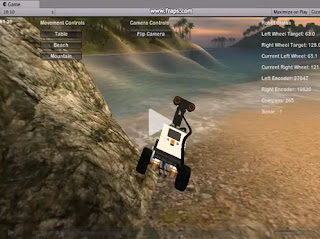

Solving the open-ended programming challenges embedded into the units that make up the Movement, Sensors, and Program Flow Chapters.Different math levels – Solve the Expedition Atlantis Math Game in Explorer, Cadet, and Admiral Levels.
Virtual world robotc software#
The EV3 programming curriculum and ROBOTC software provide many opportunities for students of all abilities: It involves all aspects of instruction: classroom delivery, overall learning environment, learning content, and assessment. Differentiated instruction encompasses more than just assessment. Differentiated instruction asks teachers to approach students at their instructional level, and requires students to show evidence of growth from their instructional level. One of the biggest challenges facing teachers today is meeting the needs of each individual student in their classroom that is the core of differentiated instruction. Reflection Questions for each chapter can be found in the Reproducibles section of this Teacher’s Guide.Students answer the Reflection Question for the chapter individually, as an in-class or homework assignment.Assign the Reflective Question for the chapter Groups may be asked to document their solutions in journals or logs, and especially to explain how they overcame the key problems identified at the start of the unitĤ.Each group constructs its own solution to the Unit Challenge Groups proceed through the video trainer materials at their own pace, following the video instruction directly, and constructing solutions to the Try It! and Mini-Challenge steps as they goģ. In a group, identify and note key capabilities the robot must develop, and problems that must be solved in individual engineering journals or class logs (e.g.View the introductory video as a class, or in individual groups, then review the challenge task for the unit TopicsĪ typical plan for an Introduction to Programming chapter is:ġ. Robot Virtual World extension activities that are designed to significantly enhance student’s programming opportunities allowing them to program robots underwater, on an island, or in an outer space environment using the same commands that they use to program their LEGO® EV3 physical robot.The Unit Challenge based on the original robot’s problem, for students to solve in teams as an exercise and demonstration of their mastery of the concept.Semi-open-ended Mini-Challenges which ask students to use the skill they have just learned to solve a relevant small portion of the final unit challenge.Semi-guided “Try It!” exploration activities that expose additional uses for and variants on each robot behavior.Built-in questions that give students instant feedback on whether they understood each step correctly, to aid in reflection and self-pacing.Loops) by building simple programs that progress toward the end of unit programming challenge

Step-by-step guided video instruction that introduces key lesson concepts (e.g.A LEGO® EV3 – scale version of the problem to solve with an EV3 robot.



 0 kommentar(er)
0 kommentar(er)
